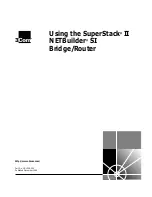
302
Enter the delay interval between screen updates (1~2147483647): 3
•
Enter
n
, and then enter a number to modify the maximum number of displayed threads. If you
enter
5
, statistics for five threads are displayed.
Enter the max number of threads to display(0 means unlimited): 5
84 processes; 107 threads
Thread states: 1 running, 106 sleeping, 0 stopped, 0 zombie
CPU states: 93.26% idle, 0.99% user, 4.23% kernel, 1.49% interrupt
Memory: 755M total, 417M available, page size 4K
JID TID LAST_CPU PRI State HH:MM:SS MAX CPU Name
1176 1176 0 120 R 00:00:02 1 3.71% top
1 1 0 120 S 00:00:06 1 0.92% scmd
866 866 0 120 S 00:00:13 1 0.69% devd
881 881 0 120 S 00:00:10 1 0.69% diagd
720 720 0 115 D 00:00:01 0 0.23% [TMTH]
•
Enter
k
and then enter a JID to kill a thread. If you enter
881
, the thread with the JID of 881 is
killed.
Enter the JID to kill: 881
83 processes; 106 threads
Thread states: 1 running, 105 sleeping, 0 stopped, 0 zombie
CPU states: 96.26% idle, 0.54% user, 2.63% kernel, 0.54% interrupt
Memory: 755M total, 418M available, page size 4K
JID TID LAST_CPU PRI State HH:MM:SS MAX CPU Name
1176 1176 0 120 R 00:00:04 1 1.86% top
866 866 0 120 S 00:00:14 1 0.87% devd
1 1 0 120 S 00:00:07 1 0.49% scmd
730 730 0 0 S 00:00:04 1 0.12% [DIBC]
762 762 0 120 S 00:00:22 1 0.12% [MNET]
•
Enter
q
to quit interactive mode.
Table 74 Command output
Field Description
84 processes; 107
threads
Numbers of processes and threads.
JID
Job ID of a thread, which never changes.
TID
ID of a thread.
LAST_CPU
Number of the CPU on which the latest thread scheduling occurs.
PRI
Priority level of a thread.
State
State of a thread:
•
R
—Running.
•
S
—Sleeping.
•
T
—Traced or stopped.
•
D
—Uninterruptible sleep.
•
Z
—Zombie.
HH:MM:SS
Running time of a thread since last restart.
MAX
Longest time that a single thread scheduling occupies the CPU, in milliseconds.
CPU
CPU usage of a thread.
















































